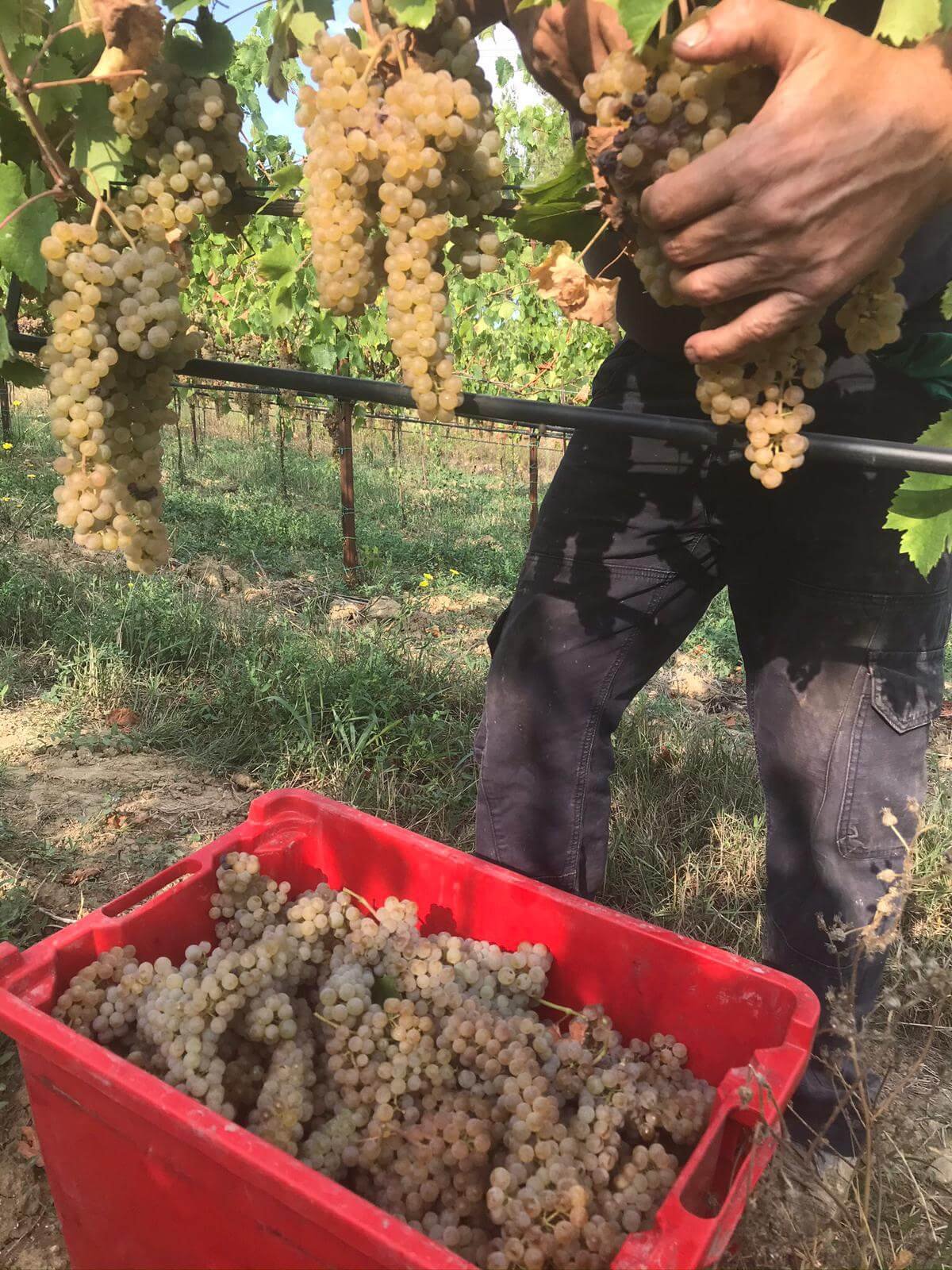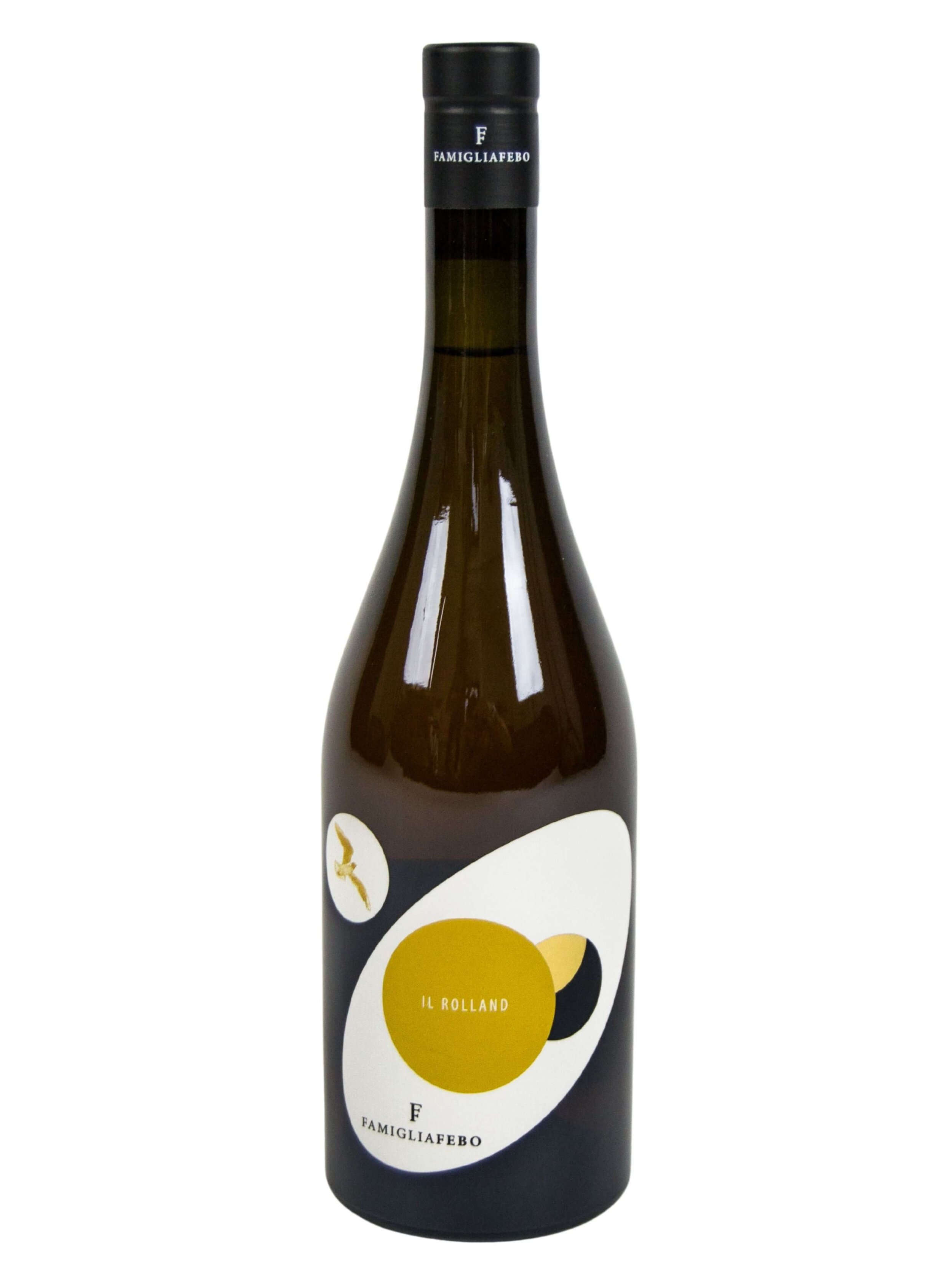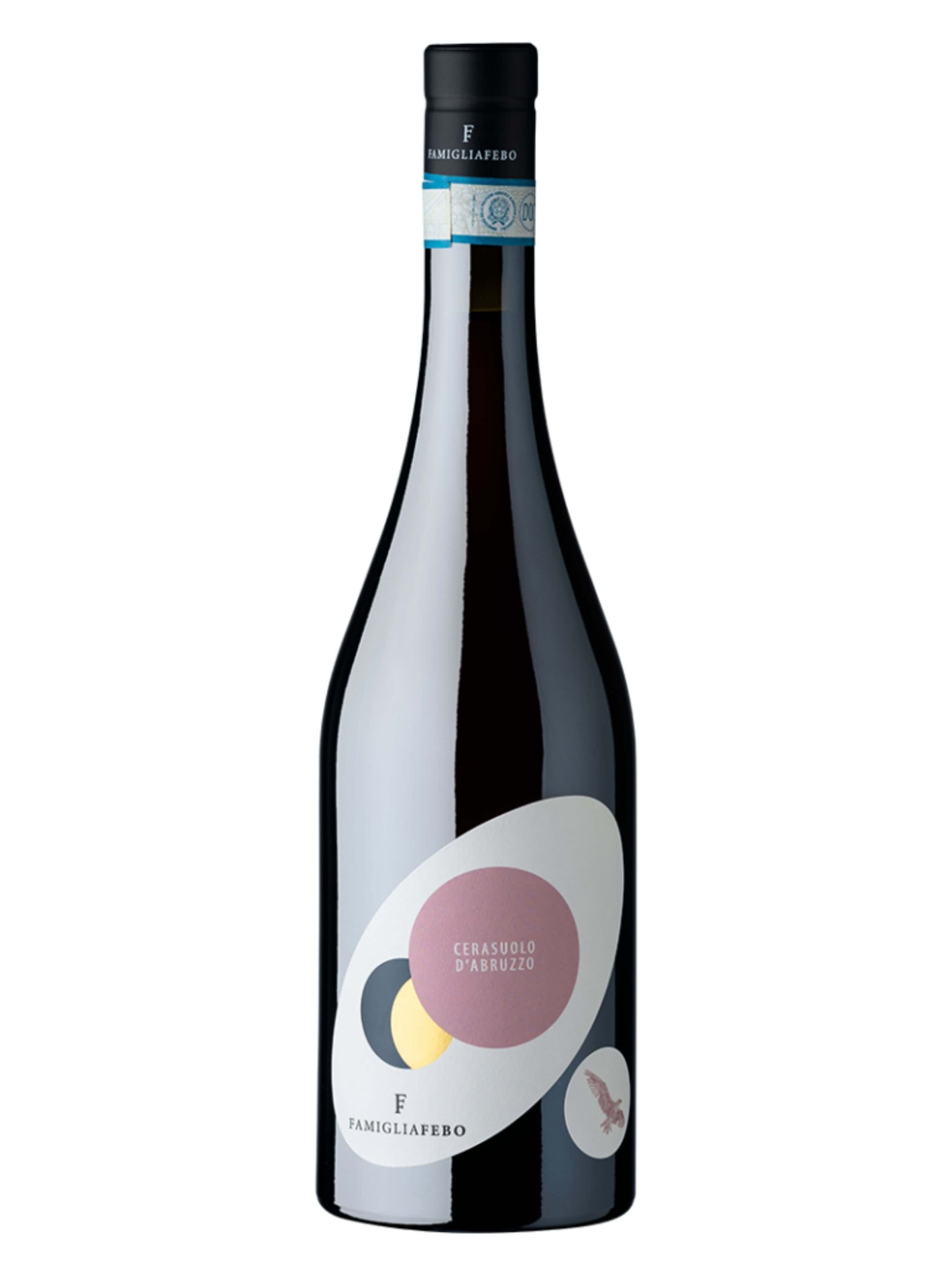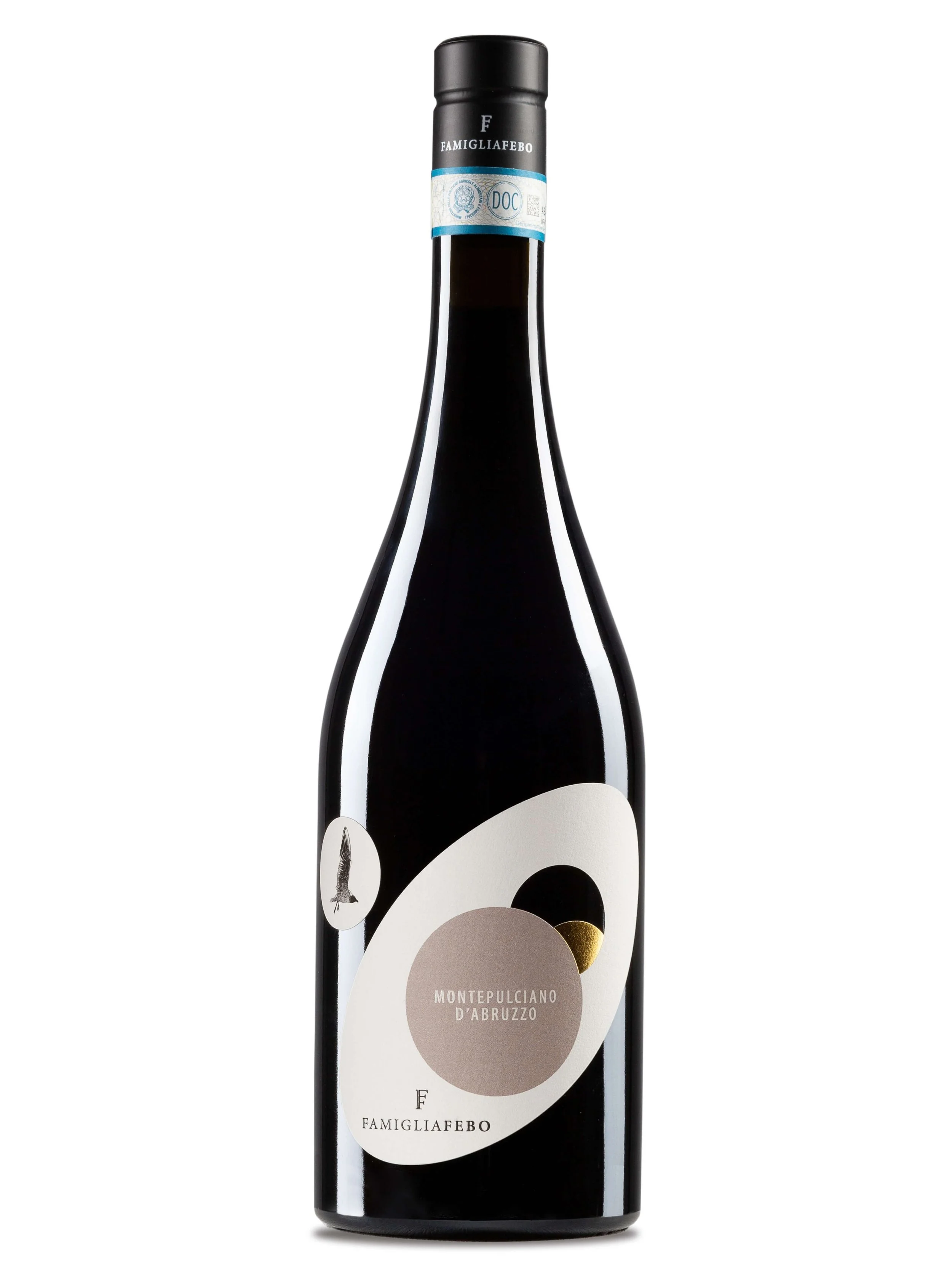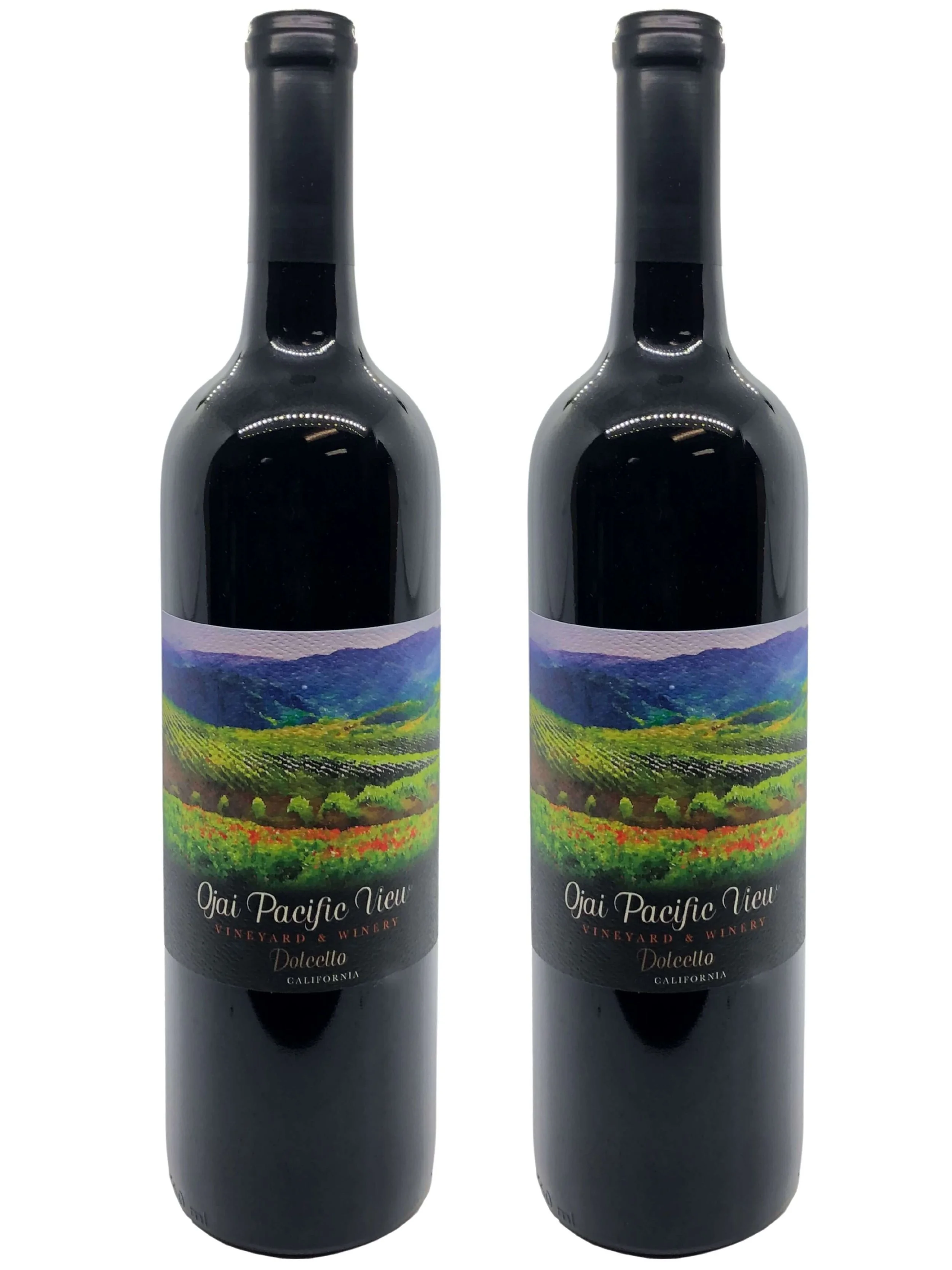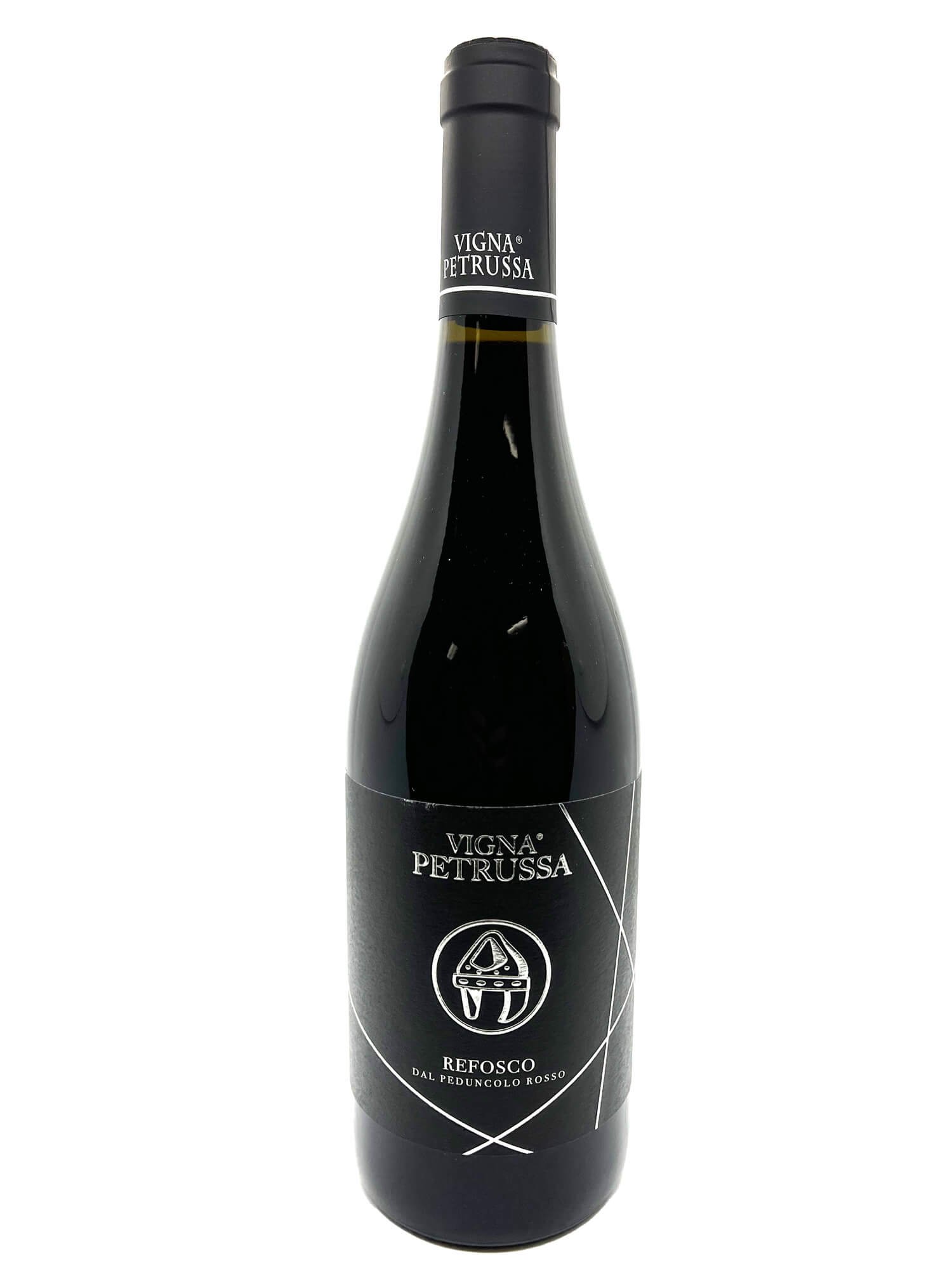Mother Nature + Math = Wine Vintage
Sheila Donohue, Founder of Vero, was not always in the wine industry. A good 30 years prior to making the break for wine (& food) full time, she was working in banking & technology while, unknowingly, becoming a budding wine expert. Those coming from ‘pre-millennial’ generations will remember clipping out newspaper articles (yes, from printed newspapers!). As she was starting to learn about wine in the 90’s and early 2000’s, her eye was drawn to any wine related piece she read in the news, and as she was cleaning out her office recently came across this clip she thought would be worthwhile to keep about how vintages fared for Bordeaux wines. While she was not too privy to Bordeaux wine, it caught her eye because ‘you never know,’ she could become a future collector of Bordeaux. Plus she was intrigued by how year by year a wine could be so different.
Back then were the ‘Parker days’ where almost every wine buying consumer in America were relying on a wine critic to give a rating to a wine before they bought it, and when wine critics held more influence on Americans’ wine buying decisions. And certainly wine collectors relied heavily on (and still use) vintage reports to determine what wine to invest in and what to avoid.
Fast forward to 2023, when a wine drinking consumer decides what wine to buy, how important should vintage be?
The answer is: it depends on what type of wine the consumer is buying. Those of you that follow our blog will know about this growing divide in the wine industry between people that buy wine solely on taste and price and those that buy wine because they want to know everything about it. Those in the former group will be choosing wines that will have little to no variation year by year. (Why?… hmm.. that’s a good idea for a new blog article.) Meanwhile, those in the latter group are buying a wine whereby you know exactly where the grapes came from and the winegrower, who is usually also the winemaker, does not interfere with nature, allowing for the influence of what Mother Nature did during that year, to shine through in the wine.
What causes variations year by year in wine and what kind of wine will result? Let’s find out.
What is a vintage in wine?
Examples of four wine vintages of Ojai Pacific View: 2017-2020
By the simplest definition, a wine vintage is the year you will find displayed on the bottle indicating the year the grapes were harvested. Why is this important? Because wine is, at its core, a product of nature and as such it is heavily influenced by all those natural factors that inevitably vary season by season and year to year. And this explains why we might happen to find that a wine coming from the same vineyard, can be very different from one vintage to the next, hence the wine aficionados’ quest to find ‘the perfect vintage’.
But aside from searching out a great vintage, there is fun and excitement to look year by year and taste all vintages, enjoying them and the slight differences for what they represent. The beauty in embracing these variations instead of fearing them is encompassed in a sense of appreciating perfect imperfections, and now is the time to pull out your inner wabi-sabi!
But what makes a good vintage varies from place to place, and even from variety to variety; what is good for one variety and/or location is not necessarily optimal for another. However, today, let us focus on just one type of vintage variations that can take effect: the climatic elements. How a winemaker can choose to tweak a wine (maybe a little more wood or bottle aging for example) are other ways vintages can be different, but often times, these stylistic variations can be the winemaker adjusting to the effects of a climatic element, and stylistic changes are another discussion.
As a quick side note before we dive in, you may sometimes see wines listed as ‘NV’ or ‘Non Vintage’. This refers to wines that are a blend of wines and juices from multiple years of harvest, think like Champagne. These wines search to create a different effect by blending together different years to meld them, and can create unique and super fun results, like the sauvignon blanc blend of Schist Happens from Austrian winegrower Michi Lorenz. But now, on to the meat of the matter: what climatic changes can affect wine, an how?
The Three Variables of a Vintage
Winemaking has a lot of chemistry involved, so it is no surpise that we can boil climatic vintage variations down to a formula, much like an equation in mathematics or a compound in chemistry. We like to look at the formula for a wine vintage as follows: T+S+R=V, or better said: Temperature + Sun + Rain = Vintage. As necessary, we can add the extra variables such as F (frost) or H (hail), but seeing as these don’t necessarily happen every year, we’ll keep them as optional.
Temperature
Constant weather with constant temperatures throughout the entire growing season is a producers dream, as the extremes in both high and low temperatures are not ideal. Especially hot weather leads to high sugar at the expense of acidity, giving overly jammy flavors or excessively high alcohol levels in the wine, sometimes even making it difficult to start or finish the fermentation. On the other hand, particularly cool years will have the opposite effect, with grapes rich in acidity but lacking in sugars that will go through a shorter fermentation, which leads to wines with too low alcohol and a weak structure.
This flips in the days right before harvest, where producers look for lots of diurnal fluctuation, i.e., temperature variation in one day, with warm temperatures in the day and cool temperatures at night. This helps the grape balance ripening and sugars, without getting too carried away and losing its acidity.
Sun and Light
Like any other crop, vines need sunlight to survive. A longer growing season that starts early in the spring with lots of sunlight when temperatures are not yet too high translates in better yields of higher quality wines. On the contrary, shorter growing seasons with particularly long cloudy and rainy periods slow the growth of the plants, preventing the optimal maturation of the grape berries. The early awakening of the vines is a welcomed sign, although it can increase the risk of spring frosts, which is one of the most dreaded seasonal phenomena by winemakers. During the year, an important way that winemakers can temper the effects of too much sun is to leave more foliage, to help shade and protect the delicate grapes, but this can lead to poor aeration and mold if the year also is too wet.
Rain and Water
Small wine producer Canalino checking his Brunello vines.
Rain is an essential aspect to any agricultural product, and wine is no different, especially in the parts of the world where irrigation is not an option. Rain fosters the vegetative growth of the vines and thus can lead to bigger yields. But here, the key is timing and intensity of the rain that can really make a huge difference in the final outcome of the vintage. Rains during the growing cycle of the vines can allow beneficial growth. Although too much rain can lead to the spreading of detrimental molds and fungal diseases, like we saw first hand this summer and talked about in this article.
Towards the end of the season, when the grapes are ripe and almost ready to be plucked, rain is dreaded by winemakers, as it causes the berries to swell and the flavor, aroma, and color compounds to dilute. This leads to wines with less intense aromas and less concentrated flavors. In general, an overly rainy year increases the volume of the grapes at the expense of the concentration of the fruit, giving a high quantity, but diluted wine. And this doesn’t even talk about flooding that can outright destroy the vines or land.
What Happens When a Vintage Goes Wrong?
It is abundantly clear that every aspect of a wine is strongly affected by vintage variations, from taste to aroma and even color, and there are so many factors that can influence not the characteristics of a wine year by year. Seeing as most of them depend on weather that is beyond human control, at the end of the day, the first and most important thing to a winemaker is always going to be keeping an eye on Mother Nature. The issue is, especially as we’ve seen this 2023 year, she can be creative, and not always in a good way. But that is the winemaker art: crafting a delicious product even in the worst situations. This can mean that, for example, a biodynamic winery or a natural winery can be hit particularly hard by bad weather as they do not want to treat their vines or wines.
Sometimes, it is just not possible. Fires in the area can render grapes unusable and foul smelling from smoke taint, or hail can literally strip the fruit and leaves off the vines. In these years, the decision is out of the winemaker’s hands: they simply don’t have the fruit to use.
So what happens in years where maybe things are top notch? Well, the producer can take the financially difficult, but quality minded, decision to not release a vintage, such as Domus Hortae did for their 2022 Ti Esti Minutolo (which you will notice in the VeroShop is only available in the 2021 vintage). Or, in places where multiple denominations overlap, they can decide to ‘downgrade’ the wine, releasing it a little early as a lesser denomination. This is what Canalino did for their 2017 Brunello, turning it instead into Rosso di Montalcino. They did bounce back however, and we can report that the 2018 Brunello is stunning. This is particularly interesting, as during a trip to visit Canalino in Montalcino, Tuscany, we took the opportunity to taste other Brunellos, especially the 2017 vintage… what we found is that while 2016 and 2018 were lovely well balanced wines, in the wineries that decided to make a 2017 vintage, they were slightly less enjoyable overall. This solidified our opinion of Canalino as an exceptional Brunello producer, upholding the integrity of his Brunello.
And lastly, maybe something goes wonky, but doesn’t ‘ruin’ the vintage… it just makes it interesting. This can be the case like Febo’s Rolland Pecorino wine where the 2018 vintage was so hot the wine became a darker color than usual. Or maybe Ojai Pacific View’s Dolcetto, that in 2018 came out so hot, it was almost like a late harvest dried wine!
Hail damaged vines in Piedmont, Italy
All the more reason to search out natural wines and small producers that have integrity to know when a variations is too much, or just right for a twist of fun.
What the Winemakers Say
We will have in depth looks at some vintage variations of two specific wineries coming up soon, so subscribe to our Vero Newsletter to get updated as soon as these deep dives are released. But in the meantime, we interviewed Davide Febo from Abruzzo and Jacqueline Mitchell of Ojai Pacific View to get some wine maker insights on vintages, what follows are the direct answers of the winemakers.
Vintages of Febo Family Winery
These are questions that encompass a lot of the work we do, made of continuous decisions to be taken based on the situations that arise, with the aim of interpreting the vintage in the best way, respecting the craftsmanship of the wine.
Vero: How do various vintage variations affect your wine making decisions in the vineyard and cellar?
Davide: In our experience, stating the vintage of a wine is essential, it is like an identity card. The vintage contains everything or almost everything. In our winery, most of the decisions related to the vintage are taken in the vineyard. We have experienced a wet and rainy vintage like 2018 and then other vintages where we have experienced a significant water shortage like 2020, 2021, and 2022.
Basically, I would say that the vines need sun, wind aeration, and water to strive and therefore to express themselves at their best, with optimal ripening. The sun because the bunches need sunny summer days to ripen, the wind because good ventilation in the vineyards keeps leaves and bunches protected from humidity and therefore from vine diseases, and water because the vine needs water reserves to withstand summer temperatures and carry on a good ripening of the bunches.
Unfortunately, starting from the 2019 vintage we have experienced summers with very high temperatures and in autumn/winter the rains were scarce. This caused a chronic water shortage within our soils that has led us to face some problems related to vineyard management.
The Febo Family harvest.
We are certainly lucky because we have vineyards with different sun exposures. The vines facing north suffer less than those facing south. But in general, if the vines can’t get water, in the first weeks of August, which is a key period for the ripening process, the vines tend to slow down the accumulation of sugars and, at the same time, the acidity of the berries decreases. Without going too much into technical details, the plant feels hot, it’s thirsty, so it kind of slows down its ripening process, and it most likely won’t reach an optimal ripening.
Of course, making wine in an artisanal and natural way, for us means dealing with the values of the must that may or may not be excellent, so we need to try and manage vinification and fermentations as best as we can. In recent years, most of the decisions taken in the vineyard were aimed at making the vines suffer as little as possible, so that they could reach a good ripening, with sugars/ph/total acidity values as balanced as possible.
Decisions in vineyard management can be things like the management of leaf mass. In general, it is important to defoliate in order to expose the bunches as much as possible to limit humidity and stagnation. But in recent years, we have been forced to limit defoliation to the minimum, because the leaves were necessary to protect the bunches from the sun that otherwise would burn them. In normal vintages, we do a superficial soil work in order to move and aerate the soil. However, in recent years, at least in some of the more plots that were suffering the most, we decided not to work the soil at all to avoid drying out further the subsoil, which is already lacking water.
Also, the ratio between the number of bunches and the vegetation of the plant is crucial and must be managed according to the trend of the vintage, but also based on the health and age of the vineyard.
Vero: What would a 'classic' or 'perfect' vintage look like for Abruzzo?
Davide: It’s difficult to talk of a classic vintage. But it’s possible to talk of perfect vintages, for example 2015 was a great vintage, and even 2010.
But in these cases, there are many elements that go into place, for example: summers with warm temperatures, although not exceeding 32-35 degrees Celsius (90-95 degrees farenheit). Sunny and windy days, with some summer thunderstorms that wet the earth, cool down summer temperatures, and replenish the water reserves in the subsoil. Another crucial element for an optimal ripening - and this is especially true for Montepulciano – is that from August 15 onwards the temperatures start to drop gradually with thermal excursions between night and day. This is because the thermal excursions of the late summer nights really make the difference, as they allow for an optimal ripening because the plant does not go into water stress and continues to work at its best, maintaining a good ph and a satisfactory overall acidity, which does not drops suddenly. These are signs that the vine is working well.
Two Febo wines available in different vintages.
In these past few years, we didn’t really get thermal excursions at the end of August or beginning of September. On the contrary, there have been years where we harvested at the end of September with a summer climate. For example, today, we are at the end of October and yet there are 30 degrees (85 farenheit), which is a summer temperature!
I end here my answer because there would be too much else to say but I already gave some ideas on which to reflect. And we should also reflect on the impact that these climate changes are having on wine production. In my opinion, it’s a devastating impact if we want to produce quality artisan wines.
Vero: How has the 2023 vintage been so far? Are you hopeful for a good vintage or worried about the outcome?
Davide: 2023 was an anomalous vintage, but it basically confirms the trend of these past few years. We are going towards a tropicalization of the climate: high, constant temperatures, excessive humidity, lack of rain. But when it starts to rain, violent storms arrive, with a lot of water falling in a very short amount of time.
This happened in 2023, and in the end of May, it it rained without ever stopping until the beginning of July. Unfortunately, these uninterrupted rains runied production in more than half of Italy (from Emilia Romagna to half of Puglia). Downy mildew entered the vineyards and proliferated thanks to the many hours of uninterrupted rain! But, we tried in every way to fight it. I must say that it was a struggle in every sense until the days of the harvest. We make organic wine, so we did not use any chemicals, so we had losses like everyone else, but I am happy because in the and we were able to have a good quanity of harvest anyway.
The wines of 2023 are now in tanks and have just started the aging, so their opportunity to express themselves at their best is yet to come. As a winemaker, I aming coming out stronger and with more awareness after this 2023 summer. It will be a vintage that we will remember forever perhaps for the perseverance and the struggle that are the symbols of this 2023 vintage. We worked with the vines at night, under the rain, in the mud, just to try to save the bunches. The trends of ripening were varied. In some cases not good because the vine carried few bunches compared to a normal vintage, but I must say that I am satisfied with the wines that so far we have in the tanks. Even this year they have their own typicality, they are a snapshot of a hard vintage, but also emblematic of the climatic trend of recent years.
Vero: In regards to the specific vintages of 2020 and 2021, what were the climatic elements like during the year?
Flooding in Emilia Romagna earlier this year.
Davide: Regarding the vintages 2020 and 2021, they were very similar and in general the common element of the two vintages was the water shortage combined with very high summer temperatures. In our winery I had a more balanced ripening in the plots of Spoltore exposed to the north and a more difficult ripening in the vineyards exposed to south and south west.
Clearly, we took care the vineyards all summer and we implemented behaviors aimed at protecting the bunches from excessive sun, trying to preserve as much as possible the humidity of the soil. In some cases, we also intervened with emergency irrigation (this is also a topic that could be discussed). The only positive aspect of such hot summers is that without humidity and rain it means we have to do very few organic treatments.
Vero: It seems like for Febo, a vintage is made in the vineyard more than the cellar.
Davide: I talked more about the vineyard and less about the cellar as we try not to intervene in the cellar. For us, it is important to express the wine based on the vintage, this is the reason why all the decisions that I take are taken in the vineyard and they are all aimed at the best possible management of the vineyards, once I decide to harvest, it is essential that the fermentation goes well, and for this to happen it is necessary that the values of the must are right and balanced. Once the wine has fermented, the game has been played and it is up to the wine. I just let it rest and respect it. I can only decide when to harvest according to the climate, I can decide for Montepulciano how many days to leave it in contact with the skins, but then it is the wine that has to speak, and in some cases I can not do anything but stand and watch the evolution of a wine.
Sometimes I’m a bit scared, I always wait for a wine to express itself at its best, and to bring out its best characteristics. For me, wine is like a child on the first day of school. Sometimes I’m anxious, but then I reflect on the fact that, in the vineyard, I gave my best considering the vineyards and the vintage and I learn to relax because, if the wine is treated as best as it can, it can take months or even years, but in the end it will always say its own.
Clearly these are reflections that make sense only because we work in an artisanal way. We do not intervene with chemistry in the cellar or in the vineyard.
Vintages of Ojai Pacific View Dolcetto
Vero: Ojai Pacific View has only one variety: dolcetto. How does this affect your annual wine production?
Jacqueline: Well, the vineyard land was very tiny, and planting one variety was more a necessity than a choice: we simply didn’t have room at the time to plant more than one grape. However, this did cause us to, let’s say, put all of our eggs in one basket. In years where maybe its not the best weather for dolcetto, we don’t have a lot of wiggle room. When something goes wrong, we just don’t make wine. That can be a pest or animal, like the year a group of deer found the vineyard and in the space of one evening stripped all the vines, or bees the following year that again destroyed a whole harvest. But it can be also things like extreme heat or lack of water. The first year we wanted to harvest our irrigation system broke and we nearly lost the vines all together for example. It made things tricky, but definitely interesting and never boring!
Vero: Give us a quick breakdown of your four vintages (2017-2020) and what factors shaped them.
Jacqueline: Well, 2017 is definitely an outlier for our winery. It was our first year of actual harvest, thanks to the aforementioned issues, and quite honestly we were caught unprepared as we thought we might lose the harvest again. This is why the label is different (whipped up in haste), and we had a different winemaker than our gold medal winning vintages of 2019 and 2020. However, I will say, I recently tasted a bottle and found that it is aging quite nicely and still delicious.
In 2018 we see a climatic effect take full force: heat. It was such a hot year, that because of my father’s work as a pilot, we had to delay harvest by three days while he flew a trip. When he left, the sugars and acids were just under perfection, so we decided to toss the dice and wait until he returned. While not a ‘mistake’, it drastically changed the eventual outcome: by the time Dad got home, a heat wave had hit. While he was gone temperatures had soared to 100 degrees, causing the sugars in the grapes to go nuts and some grapes to even raisin. We harvested anyway, avoiding the most dried grapes, and what resulted was the 15% alcohol 2018 vintage. It is great though… when I want a wine that is a big bold red wine and like a fruit bomb this is what I reach for. Sometimes I joke with friends that its our late harvest version of Amarone or Refosco.
2019 and 2020 were more controlled vintages. We starting working with a new winemaker, Dominic O’Reilly, and he really helped us hone not only our farming skills, but also added a touch of finesse to the winemaking process itself. This resulted in some great wines (that have won gold and double gold medals in a couple different competitions) that are well balanced
I’m really looking foward to watching our 2021 grow too. It was bottled and labled recently… and it’s just resting at the moment… so keep an eye out for the release. It came out very nice, much in the same vein as 2019 and 2020… Dominic really worked his magic again!
[Editor’s Note: You can taste three of Ojai Pacific View’s vintages in this Tasting Flight Trio.]
Vero: As a wine owner and sommelier, do you have any thoughts on vintages to add to this discussion?
Jacqueline pre-sampling an Ojai Pacific View Vintage.
Jacqueline: Absolutely! I love to play and taste with vintages; those small little changes that can add up to so much. As a self-proclaimed wine-geek, it is such a treat for me to get to sit down with a vintage flight. I can take forever just to go back and forth between vintages searching out every little difference and change trying to figure out what could have caused them. Vintage variations add touches of character and manuality to wines; I really feel like sometimes you can taste the hands of the people that shaped and crafted the wines. Vintages add a whole new dimension to wine that lets it be new and exciting every year; I live in the Langhe in Italy, and when the latest Barolo vintage is released I always run to taste my favorites and see how the new year shaped up.
Tasting the Vintage
With these many variables that are beyond the control of the winemaker, it is no wonder that a wine can be really different from one year to the next. When faced correctly, though, these variations can really tell the story of the season, making every vintage special, kind of like the signature of mother nature. But since a winemaker can add up to 200 ingredients to wine and not disclose it on the label, sometimes these year to year natural variations can be muted, or disappear entirely. Big and industrial winemakers are typically more concerned with maintaining a steady level of quality and a consistent flavor profile of their wines and that’s why big industrial wineries can heavily intervene with the aforementioned chemicals in the cellar to ‘fix’ the signs of vintage variation.
But, as we heard above from Davide and Jacqueline, this is not the case. However, small wineries still strive for quality. They cherish vintage variations and they work with nature rather that against it, limiting their intervention in the cellar. That’s why it’s important to get to know the producers and the way they work.
That is what we at Vero seek out small producers that respect nature and try to minimize the interventions in the vineyard and cellar. And for those of you that know our curation style, we love to compare and contrast vintages. Nand now that you’ve read up on what can influence a vintage, try a selection of different ones from our portfolio.
As a reminder, we sell to both businesses and consumers across the US:
We are enlarging our network of distributors around the country. Reach out to us if you are interested in distributing our wines.
We sell to wine stores and restaurants in certain states - contact us if you would like more info.
We do corporate gifts and sommelier guided wine tastings. Email us and we’ll tailor unique and sustainable corporate gift ideas.
If our farm crafted wines and olive oils are not in your local shop or restaurant buy wine online here and we’ll ship it to you. Browse the VeroShop to find some great small production wines and try their various vintages.
We also have a wine club for true wine explorers seeking to discover a unique and authentic small production wine they never had - plus it just won an award for Best Wine Club!





